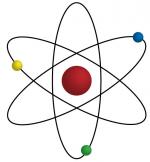|
This section contains 336 words (approx. 2 pages at 300 words per page) |
In ancient philosophy, and until relatively recently, an atom was considered to be the ultimate unit of matter, and the building block of which more complex conceptual and physical constructs were built. This view has been extended to computer programming. In computer programming, an atomic data type is a data type, be it an action or an object that cannot be broken down into smaller units. The data type is indivisible, unchangeable and whole.
Generally, a data type is a collection of data-type properties—a classification of a particular type of information. The information varies depending on the programming language, but is generally of three types: an integer (a whole number that does not have a fractional component), a floating point (a number with a decimal point) and a character (a readable text). Capable of being stored on a disk, a data type provides all the information needed for the conversion of data to or from the data type.
All atomic data types have a common set of properties in addition to the set of properties that are specific to the particular class of data type in which they reside. Some of the properties are:
- class name
- total size of data
- byte order--how the bytes are arranged in memory
- precision--specification of the significant parts of the data
- offset--the location of the significant data within the entire data
- padding--identification of the data that is not significant.
Both integer and floating-point atomic data types exist. Additional specifying properties exist for both of these types.
Atomic data types can have different manifestations in different programming languages. In SQL, an atomic function is one that will either complete or return to its original state if there is a power interruption, or if the data flow terminates before it should. In some UNIX-based operating systems, an atomic data type is one in which no change can take place. Finally, in a language such as Lisp, an atomic data type represents the basic unit of an executable code or data.
|
This section contains 336 words (approx. 2 pages at 300 words per page) |


